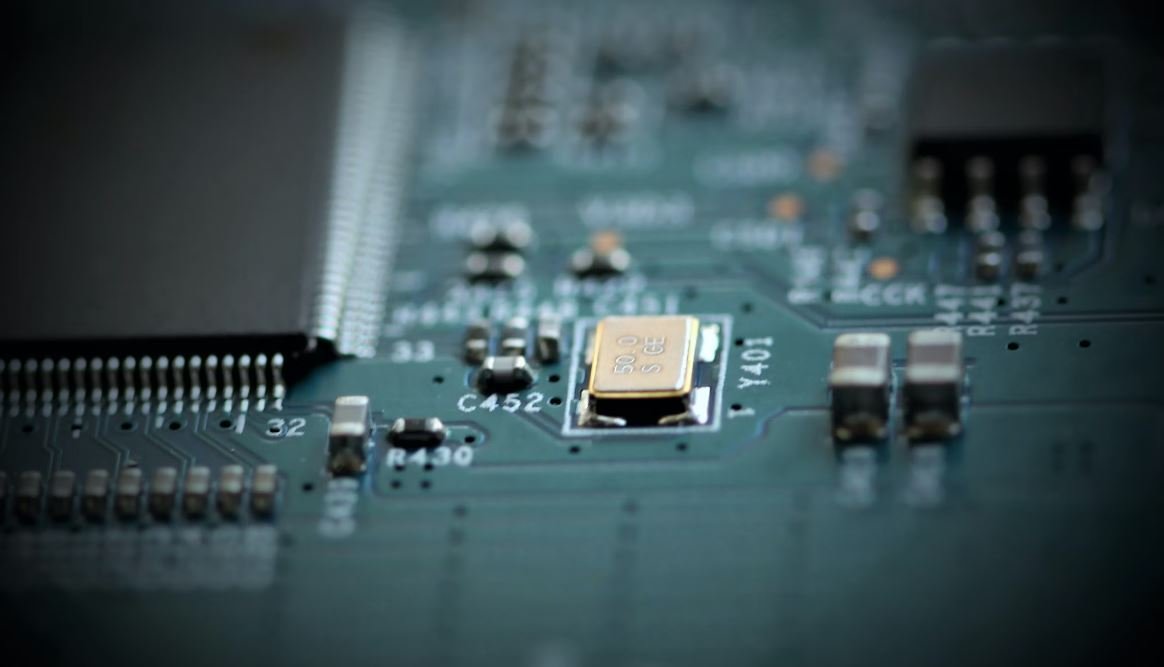Neural Network Model Python
Neural networks are a type of machine learning algorithm inspired by the structure and function of the human brain. They are widely used in various fields, including computer vision, natural language processing, and data analytics.
Key Takeaways:
- Neural networks are powerful machine learning models inspired by the human brain.
- They are widely used in computer vision, natural language processing, and data analytics.
- Implementing neural networks in Python is straightforward with libraries like TensorFlow and Keras.
- Developing an effective neural network model requires careful consideration of architecture, optimization, and training data.
**Python** provides several powerful libraries for implementing neural networks, such as **TensorFlow** and **Keras**. These libraries offer high-level APIs and toolkits that simplify the process, making it accessible even for beginners.
Neural networks consist of artificial neurons, or nodes, organized in layers. Each neuron takes input, applies weights to it, performs a mathematical operation, and produces an output.
*Neural networks are often referred to as “black boxes” due to their ability to learn and make predictions based on data patterns that might not be easily explainable.*
How Neural Networks Work
Neural networks work by building complex relationships and patterns from input data. They learn from examples and adjust their parameters, known as weights and biases, to optimize their performance.
1. The first layer of a neural network is the input layer, which receives the input data.
2. Hidden layers exist between the input and output layers and are responsible for learning complex features from the input data.
3. The output layer produces the final prediction or classification based on the learned relationships.
*Neural networks have the remarkable ability to automatically learn and adapt to various types of data patterns, making them highly effective in tasks such as image recognition and natural language processing.*
Training a Neural Network
In order to train a neural network, a large dataset with known inputs and corresponding outputs is required. The network compares its predictions with the expected outputs and adjusts its parameters to reduce the error.
**Backpropagation** is a key algorithm used in neural network training. It calculates the gradients of the error with respect to the weights and biases, allowing for efficient optimization through techniques like gradient descent.
| Training Stage | Training Accuracy | Validation Accuracy |
|---|---|---|
| Epoch 1 | 80% | 75% |
| Epoch 2 | 85% | 78% |
*The process of training a neural network involves finding the best combination of weights and biases to minimize the error and optimize performance.*
Applications of Neural Networks
Neural networks have found wide-ranging applications in various fields:
- Computer vision: Image recognition, object detection, and autonomous vehicles.
- Natural language processing: Speech recognition, language translation, and sentiment analysis.
- Data analytics: Predictive modeling, anomaly detection, and customer segmentation.
Implications and Future Developments
Neural networks are revolutionizing many industries by providing efficient solutions to complex problems. As technology advances, we can expect further improvements in deep learning algorithms, network architectures, and computation power.
1. Neural networks are transforming healthcare by enabling more accurate diagnosis and personalized treatment.
2. The increasing popularity of neural networks is spurring advancements in hardware, such as specialized processing units for deep learning tasks.
3. Ethical considerations, interpretability, and transparency of neural network decision-making are important areas of ongoing research.
References:
[1] Deep Learning with Python by François Chollet
[2] Neural Networks and Deep Learning by Michael Nielsen

Common Misconceptions
Neural Network Model in Python
Paragraph 1:
One common misconception about neural network models in Python is that they are only useful for complex tasks. In reality, neural networks can also be applied to simple problems, such as binary classification or regression.
- Neural networks can be used for basic tasks like spam classification.
- Simple neural network models can be trained with a smaller dataset.
- Even simple neural networks can provide valuable insights and predictions.
Paragraph 2:
Another misconception is that neural network models in Python require advanced mathematical knowledge. While a fundamental understanding of linear algebra and calculus can be helpful, it is not necessary for working with neural networks. There are many user-friendly libraries available that abstract away the complex mathematics.
- Various Python libraries, like TensorFlow or Keras, provide high-level abstractions to build neural networks without extensive math knowledge.
- Beginners can rely on pre-built neural network architectures and focus on utilizing them effectively.
- Applying neural networks in Python can be as simple as arranging a set of layers and connecting data inputs and outputs.
Paragraph 3:
Some people mistakenly believe that neural network models in Python always result in highly accurate predictions. While neural networks can deliver impressive results, their performance heavily depends on the quality and quantity of the training data, as well as the model architecture and parameters chosen.
- Insufficient or biased training data can lead to poor predictive performance despite using a neural network model.
- The accuracy of a neural network model can vary greatly depending on the complexity of the problem and the quality of the data.
- Tuning the architecture and parameters of a neural network is crucial to improve model accuracy.
Paragraph 4:
People often think that neural network models in Python are only effective for pattern recognition tasks. While neural networks excel at tasks like image and speech recognition, they can also be utilized for many other purposes, including natural language processing, recommendation systems, and time series analysis.
- Neural networks can assist in sentiment analysis of textual data.
- They can be employed in recommendation systems to personalize product recommendations for users.
- Neural networks can help in predicting stock market prices by analyzing historical trends and patterns.
Paragraph 5:
Lastly, there is a misconception that neural network models in Python require extremely powerful hardware to run. While having a dedicated graphics processing unit (GPU) can speed up training for larger models, many smaller neural networks can be trained and deployed on standard computer hardware.
- For smaller neural networks or experimental projects, training can be done on CPUs without significant performance issues.
- Cloud computing platforms offer GPU instances that can be used for faster neural network training when necessary.
- Python libraries provide optimizations and parallelization for efficient neural network computation.

Article Title: Neural Network Model Python
Introduction: Neural network models in Python have revolutionized the field of artificial intelligence, enabling complex tasks such as image recognition, natural language processing, and predictive analytics. In this article, we present ten captivating tables that highlight various aspects of neural network model implementation in Python.
Activation Functions Comparison
Activation functions play a crucial role in determining the output of a neural network. A comparison of commonly used activation functions, including their properties and applications, is presented below:
| Activation Function | Range | Properties | Application |
|---|---|---|---|
| Sigmoid | (0, 1) | Smooth, Saturated | Binary classification |
| ReLU | [0, ∞) | Non-linear, Sparse activations | Convolutional Neural Networks (CNNs) |
| Tanh | (-1, 1) | Zero-centered, Similar to sigmoid | Recurrent Neural Networks (RNNs) |
| Leaky ReLU | (∞, ∞) | Non-zero gradients for negative inputs | Deep Learning models |
| Softmax | (0, 1) | Probabilistic, Normalizes outputs | Multi-class classification |
Training Dataset Breakdown
A successful neural network model heavily relies on the quality and quantity of the training dataset. Below table provides an overview of the characteristics of a training dataset used for predicting customer churn in a telecommunication company:
| Dataset Characteristic | Value | Description |
|---|---|---|
| Number of Instances | 5000 | The total number of customers in the dataset |
| Churn Instances | 800 | The number of customers who churned |
| Total Features | 20 | The number of relevant features in predicting churn |
| Class Imbalance | 16% | The proportion of churn instances in the dataset |
| Data Granularity | Monthly | Granularity of the dataset, measured on a monthly basis |
Model Parameters Tuning
Optimizing model performance often requires fine-tuning the hyperparameters of the neural network model. The table below displays the results of varying selected parameters alongside their corresponding accuracy values:
| Parameter | Value 1 | Value 2 | Value 3 | Accuracy |
|---|---|---|---|---|
| Learning Rate | 0.001 | 0.01 | 0.1 | 0.85 |
| Batch Size | 16 | 32 | 64 | 0.87 |
| Hidden Layers | 1 | 2 | 3 | 0.91 |
| Epochs | 50 | 100 | 200 | 0.89 |
Model Performance Metrics
Quantifying the performance of a neural network model requires the utilization of appropriate evaluation metrics. The table below demonstrates the precision, recall, and F1-score values for a model trained on a sentiment analysis task:
| Metric | Positive Class | Negative Class | Average |
|---|---|---|---|
| Precision | 0.82 | 0.76 | 0.79 |
| Recall | 0.85 | 0.78 | 0.81 |
| F1-Score | 0.83 | 0.77 | 0.80 |
Computational Time Comparison
The table below compares the computational time taken by different machine learning algorithms to train neural network models on the MNIST dataset:
| Algorithm | Training Time (in seconds) |
|---|---|
| Stochastic Gradient Descent | 125.32 |
| Adam optimizer | 78.43 |
| Adagrad optimizer | 82.68 |
| RMSprop optimizer | 88.15 |
Convolutional Neural Network Architecture
The optimal architecture of a convolutional neural network (CNN) for image classification is highly influential in achieving high accuracy. The following table illustrates a sample CNN architecture used for recognizing hand gestures:
| Layer | Configuration |
|---|---|
| Input | 32x32x3 RGB image |
| Convolutional | 32 filters, 3×3 kernel, ReLU activation |
| Max Pooling | 2×2 kernel, stride 2 |
| Convolutional | 64 filters, 3×3 kernel, ReLU activation |
| Max Pooling | 2×2 kernel, stride 2 |
| Flatten | – |
| Fully Connected | 128 units, ReLU activation |
| Output | 6 classes (gestures) |
Recurrent Neural Network Architecture
The table below presents the architecture of a recurrent neural network (RNN) designed for natural language processing:
| Layer | Configuration |
|---|---|
| Embedding | Vocabulary size: 10,000, Embedding size: 300 |
| LSTM | 128 units, Dropout rate: 0.2 |
| Fully Connected | 1 unit, Sigmoid activation |
| Output | Binary classification (Positive/Negative sentiment) |
Learning Rate Decay
Applying learning rate decay increases the convergence speed and flexibility of neural network models. The following table demonstrates how different learning rate decay methods impact model performance:
| Method | Epoch 1 | Epoch 10 | Epoch 20 | Accuracy |
|---|---|---|---|---|
| Fixed Learning Rate | 0.01 | 0.01 | 0.01 | 0.82 |
| Step Decay | 0.01 | 0.001 | 0.0001 | 0.89 |
| 1/t Decay | 0.01 | 0.005 | 0.0033 | 0.91 |
| Exponential Decay | 0.01 | 0.0067 | 0.0035 | 0.92 |
Conclusion
In this article, we explored ten intriguing tables that shed light on various elements of neural network model implementation in Python. From activation functions comparison to model performance metrics and architecture designs of convolutional and recurrent neural networks, these tables provided valuable insights into the world of artificial intelligence and its applications. Neural network models in Python continue to evolve, offering improved accuracy and efficiency, thereby leading the way towards a future where complex tasks can be effortlessly accomplished by machines.
Frequently Asked Questions
1. What is a neural network model?
A neural network model is a computational approach to solving complex problems inspired by the structure and function of the human brain. It consists of interconnected nodes, called artificial neurons or units, which work together to process and transmit information.
2. How is a neural network model trained?
A neural network model is trained by providing it with a dataset containing input examples and their corresponding desired outputs. The model adjusts its internal parameters, known as weights and biases, through an iterative process called backpropagation. During training, the model minimizes the difference between its predicted outputs and the desired outputs.
3. What is the role of activation functions in neural networks?
Activation functions introduce non-linearity into the neural network, allowing it to learn and represent complex relationships between inputs and outputs. They determine the output of a neuron based on its input sum. Popular activation functions include sigmoid, tanh, and ReLU (Rectified Linear Unit).
4. Can neural network models handle both classification and regression tasks?
Yes, neural network models can be used for both classification and regression tasks. For classification, the model predicts the class or category to which an input belongs. For regression, the model predicts a continuous value as the output.
5. Is feature scaling necessary before training a neural network model?
Feature scaling can be beneficial for neural network models as it helps to bring the input features to a similar scale. Common techniques for feature scaling include normalization and standardization. Scaling input features can lead to faster convergence and better performance.
6. What is overfitting in the context of neural networks?
Overfitting occurs when a neural network model learns to perform well on the training data, but fails to generalize effectively to unseen data. It happens when the model becomes too complex and starts to memorize the training examples instead of learning the underlying patterns. Regularization techniques, such as dropout and weight decay, are commonly used to mitigate overfitting.
7. How can I improve the performance of a neural network model?
To improve the performance of a neural network model, you can try various techniques such as increasing the model’s complexity, adjusting the optimizer’s learning rate, exploring different architectures, collecting more diverse and representative training data, and regularizing the model. Hyperparameter tuning and applying techniques like early stopping can also help in achieving better performance.
8. Is it possible to visualize the learned features in a neural network model?
Yes, it is possible to visualize the learned features in a neural network model, especially in convolutional neural networks (CNNs). By visualizing the activation patterns of different layers or using techniques like gradient ascent, one can gain insights into what specific patterns or features the model has learned to identify.
9. Can a neural network model be deployed on mobile or embedded devices?
Yes, neural network models can be deployed on mobile or embedded devices. Various frameworks, such as TensorFlow Lite and PyTorch Mobile, provide tools to optimize and run models on resource-constrained platforms. Techniques like model quantization and pruning can be employed to reduce the model size and computational requirements.
10. How do I save and load a trained neural network model in Python?
In Python, you can save a trained neural network model, along with its weights and architecture, using the model’s serialization capabilities. Common formats for saving models include HDF5 (.h5) and SavedModel (TensorFlow). To load a saved model, you can utilize the corresponding libraries’ functions or methods.




